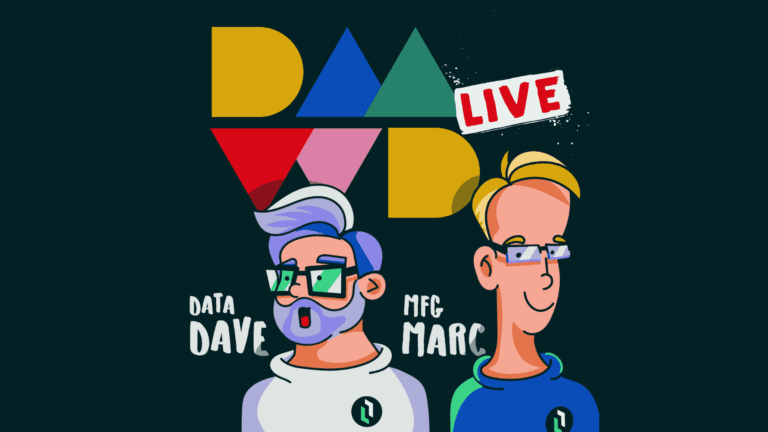If you missed the first part of our two-part blog about digital twins, click here for a refresher of the benefits and pitfalls faced by many manufacturers. Although many of the problems appear to be unsurmountable, one tried and true component can help manufacturers leverage digital twins more effectively: Edge Computing.
Let’s dive into how edge computing addresses the challenges with digital twins.
As a recap, a digital twin is a virtual replica of a physical object or system, providing a real-time representation of status, behavior, and performance. Manufacturers can monitor, analyze, and optimize processes by leveraging data from sensors, IoT devices and other sources. Pitfalls for digital twins include data privacy and security, cost, and accuracy.
However, the integration of edge computing with digital twins is shown to meet these challenges head on and give manufacturers a way forward.
Four Takeaways for Manufacturers Implementing Edge + Digital Twins
- 1.
Reduced Response Time: Edge enables real-time data processing, minimizing latency and helping manufacturers make decisions quickly. Since data is processed close to the source, it reduces latency and improves the speed of decision-making based on the digital twin created.
- 2.
Optimized Data: Given the massive volume produced by IoT devices and sensors, Edge processing gives manufacturers the ability to process only the relevant information that needs to go to the cloud or servers.
- 3.
Better Security: Cybersecurity is at the forefront of all industrial transformation projects and Edge computing helps by processing sensitive data locally, reducing the risk of unauthorized access.
- 4.
Lower Risk: Edge computing handles complex computations locally enabling more intricate modeling and simulation capabilities. What does that mean for you? It helps to reduce risk in decision-making because the gap between digital twin simulations and real-world intricacies is narrow.
Four Use Cases for Digital Twins at the Edge
Now, let’s explore how Edge computing together with digital twins is being leveraged in a few industrial use cases.
An automotive manufacturer is experiencing downtime due to unexpected machine failures. Digital twins, fueled by edge, help predict equipment failures by continuously monitoring and analyzing simulated real-time data from sensors. When the digital twin detects the potential for abnormal vibrations in a robotic arm, it can trigger maintenance alerts in advance.
Supply Chain Optimization
Creating a virtual representation of the entire automotive supply chain, digital twins provide real-time simulations on inventory, production status, logistics and more so that manufacturers can make decisions.
Employing digital twins to create virtual representations of production processes, standards, and variables such as temperature, humidity, and ingredient proportions gives food and beverage manufacturers a picture of production, without compromising real-life product development.
High consumption of energy in manufacturing is a common challenge. Digital twins, powered by Edge computing, provide simulations and patterns in real-time so that manufacturers can identify energy-intensive processes and implement energy-saving processes to meet sustainability and cost reduction goals.
These are just a few examples, but the use cases for digital twins are limitless. In manufacturing, digital twins enhance production and maintenance. Urban planning also benefits from data modeling through improved city management.
Data Modeling is Foundational for Digital Twins
Data modeling is essential for developing digital twins, serving as a digital blueprint that mirrors the physical world.
Litmus Edge addresses these needs by offering a user-friendly and efficient approach to data modeling for digital twins. We simplify the process, making it accessible even to users without an extensive programming or data science background.
Here’s how it works.
Immediate Data Usage: Litmus Edge enables users to start modeling their data as soon as it’s collected, laying the groundwork for creating effective digital twins.
Versatile Data Utilization: The platform enables the same physical asset to be modeled differently for various teams. For example, one team might use the data model for predictive maintenance, while another could use it for production optimization or other data science activities. This versatility allows different departments to access and utilize data tailored to their specific requirements.
Data Model Creation: Once data is collected from a source like a Programmable Logic Controller (PLC) or machine or any other industrial asset, Litmus Edge allows users to create a data model that correlates with the actual equipment or asset. This step is essential in transforming raw data into a structured format that is more useful to you for your analysis and decision-making needs.
Integration and Deployment: Litmus Edge makes it easy to integrate and deploy your data models. You can transmit data to platforms like Azure IoT Hub or store it in a database with just a few clicks.
Minimizing Data Processing Needs: Once a specific data model is defined at the edge, it reduces the need for additional data processing. The system enables the creation of tailored data sets that are ready to be used by various applications without further manipulation.
Litmus Edge simplifies the data representation and utilization process. Its digital twin technology allows users to troubleshoot equipment in real-time and manage data from multiple streams, catering to specific use cases and organizational needs.
Vishvesh Shah
The integration of edge computing with digital twins marks huge step forward and significant milestone for process improvement. Industries such as automotive, food and beverage, healthcare and others stand to benefit immensely realizing improvements in efficiency, reliability, and sustainability. As we move forward, the continuous advancement of edge computing technologies and the refinement of digital twin models will open new possibilities for innovation and optimization. Embracing this transformation and the advances from digital twins will be important to stay competitive in an increasingly competitive global market.
For a deeper understanding of how Litmus Edge can transform your enterprise’s approach to digital twins, review the digital twin documentation.



